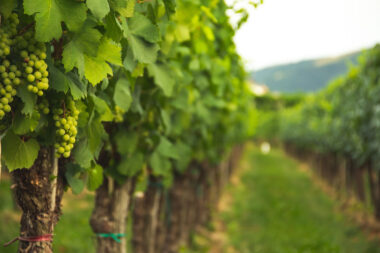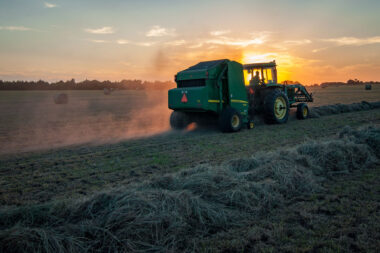The ubiquity of plastics in our daily lives has spurred an urgent quest for sustainable alternatives. Biodegradable plastics have emerged as a promising solution, offering the prospect of reduced environmental impact. However, their journey from production to disposal is not without complexities. This article explores the world of biodegradable plastics, assessing their potential benefits and the challenges that lie in recycling processes, aiming to pave the way for a more sustainable plastic economy.
The Promise of Biodegradable Plastics:
Biodegradable plastics, derived from renewable resources or designed to break down naturally, present a compelling opportunity to curb the environmental repercussions of conventional plastics. These materials hold the promise of reducing dependence on fossil fuels, decreasing carbon emissions, and mitigating the persistence of plastic waste in ecosystems.
Benefits of Biodegradability:
One of the primary advantages of biodegradable plastics lies in their ability to decompose naturally through microbial action, ultimately returning to the environment as harmless byproducts. This contrasts with traditional plastics that can persist for centuries, contributing to the global plastic pollution crisis. Biodegradable plastics also have the potential to alleviate the strain on landfill capacity, offering a more sustainable end of life scenario.
Biodegradable plastics are composed of various materials that can undergo degradation by microorganisms, ultimately returning to the environment as simpler compounds. The components of biodegradable plastics vary depending on the specific type of bioplastic, but some common components include:
1. Biopolymers:
Biodegradable plastics are often made from biopolymers, which are large molecules composed of repeating subunits derived from natural sources. These sources can include plants (such as corn or sugarcane), bacteria, algae, or even animal by products.
Biopolymers are the fundamental building blocks of biodegradable plastics, and their source determines the environmental impact and sustainability of the material. Common biopolymers used in biodegradable plastics include polylactic acid (PLA), polyhydroxyalkanoates (PHA), and polyhydroxybutyrate (PHB).
2. Plasticizers:
Plasticizers are additives that enhance the flexibility and durability of plastics. In biodegradable plastics, these are often derived from renewable resources to maintain the material’s eco friendly profile.
Biodegradable plastics require plasticizers to achieve the desired mechanical properties. Commonly used renewable plasticizers include citrate esters, glycerol, and other plant based derivatives.
3. Starch:
Some biodegradable plastics incorporate starch, a polysaccharide derived from plants, as a component. Starch is often blended with other biopolymers to improve the material’s properties and facilitate biodegradation.
Starch based biodegradable plastics are known for their biocompatibility and the ability to break down into environmentally benign components. However, they may require specific conditions for optimal biodegradation.
4. Microbial Additives:
Microbial additives, such as enzymes or microbes, can be incorporated into biodegradable plastics to accelerate the degradation process. These additives enhance the material’s ability to break down into simpler compounds under natural environmental conditions.
Microbial additives contribute to the biodegradability of plastics, offering a proactive approach to minimizing the persistence of plastic waste. They facilitate the breakdown of the material into substances that can be assimilated by microorganisms in the environment.
5. Fillers and Reinforcements:
Fillers, such as fibers or particles derived from natural sources, can be added to biodegradable plastics to enhance their strength and stiffness. These reinforcements improve the mechanical properties of the material.
The incorporation of fillers and reinforcements allows manufacturers to tailor the performance of biodegradable plastics to specific applications. Common fillers include wood fibers, cellulose, or nanoclay.
6. Cross Linking Agents:
Cross linking agents are used to link polymer chains together, increasing the material’s overall strength and stability. Cross linking can be important for certain applications, such as packaging, where mechanical strength is crucial.
While cross linking contributes to the material’s durability, it can also impact the rate of biodegradation. Striking a balance between cross linking for performance and maintaining biodegradability is a consideration in the design of these materials.
Understanding the components of biodegradable plastics is essential for assessing their environmental impact, functional properties, and suitability for specific applications. The choice of components influences the overall performance and sustainability of biodegradable plastics in diverse contexts, ranging from packaging to agricultural applications.
Some notable manufacturing techniques and advancements related to biodegradable plastics:
Fermentation Based Production:
Fermentation processes involve the use of microorganisms to produce biodegradable polymers. Bacteria such as Escherichia coli and Cupriavidus necator are engineered to ferment renewable feedstocks, resulting in the production of biopolymers like polyhydroxyalkanoates (PHA).
Enzymatic Polymerization:
Enzymatic polymerization is a green and sustainable method that utilizes enzymes as catalysts for the polymerization of bio based monomers. This technique offers precise control over polymer structure and properties.
Bio Based Monomers from Renewable Sources:
The development of bio based monomers derived from renewable resources, such as plant sugars or vegetable oils, is a key focus. These monomers serve as building blocks for the synthesis of biodegradable polymers.
Bacterial Cellulose Production:
Bacterial cellulose, produced by certain strains of bacteria like Komagataeibacter xylinus, is explored as a biodegradable and versatile material. The production process involves fermentation and can be tailored for specific applications.
Extrusion and Injection Molding:
Traditional plastic processing techniques, such as extrusion and injection molding, are adapted for biodegradable plastics. These methods are used to manufacture a wide range of biodegradable products, including packaging and disposable items.
3D Printing with Biodegradable Materials:
The use of biodegradable materials in 3D printing or additive manufacturing is gaining traction. This allows for the production of customized and complex structures using bioplastics like polylactic acid (PLA).
Blow Molding for Biodegradable Packaging:
Blow molding, commonly used for plastic bottle production, is being applied to biodegradable plastics for packaging applications. This process enables the creation of lightweight and compostable containers.
Chemical Recycling of Bioplastics:
Chemical recycling techniques are being explored to break down biodegradable plastics into their original monomers. This approach can offer a closed loop recycling system for certain types of bioplastics.
Electrospinning of Biodegradable Nanofibers:
Electrospinning is used to produce nanofibers from biodegradable polymers. These nanofibers find applications in areas such as medical products, filtration, and tissue engineering.
Blend and Composite Approaches:
Manufacturers are exploring blends and composites of different biodegradable polymers to enhance material properties. These approaches aim to improve mechanical strength, flexibility, and overall performance.
Biodegradable Polymer Coatings:
Coating traditional materials with thin layers of biodegradable polymers is a technique employed to enhance the sustainability of existing products. This approach is seen in applications like biodegradable coatings for paper and cardboard.
Green Solvents in Processing:
The use of environmentally friendly solvents in the processing of biodegradable plastics is gaining attention. This aligns with the overall goal of reducing the environmental impact of manufacturing processes.
Challenges in Recycling Biodegradable Plastics:
While the benefits are evident, the journey to a sustainable plastic economy is not without hurdles. Biodegradable plastics face challenges in the current recycling infrastructure, where they often get mixed with traditional plastics, leading to contamination. The diverse range of biodegradable polymers poses another obstacle, as different types may require specific conditions for effective decomposition.
Contamination Concerns:
The co-mingling of biodegradable and non-biodegradable plastics can compromise recycling processes. Contamination occurs when biodegradable plastics enter traditional plastic recycling streams, affecting the quality of recycled materials. This challenge emphasizes the need for separate waste streams and enhanced labeling to distinguish biodegradable plastics from their conventional counterparts.
Compostability and Industrial Facilities:
Biodegradable plastics often require specific conditions, such as industrial composting facilities, to break down efficiently. The scarcity of such facilities poses a challenge to realizing the full potential of biodegradable plastics. Infrastructure development and increased accessibility to composting facilities are vital to optimizing the environmental benefits of these materials.
Regulatory Landscape and Standardization:
The lack of standardized regulations for biodegradable plastics further complicates their integration into existing recycling systems. Establishing clear guidelines for production, labeling, and end of life management is essential to creating a cohesive and effective framework for the adoption of biodegradable plastics on a broader scale.
In conclusion, the journey toward a sustainable plastic economy through the lens of biodegradable plastics is a nuanced exploration of promise and challenge. The potential benefits of biodegradable plastics, rooted in their renewable origins and capacity for natural decomposition, offer hope for a reduced environmental impact compared to conventional plastics. However, the realization of these benefits hinges on navigating a complex landscape. Challenges in recycling processes, including contamination concerns and the lack of standardized regulations, underscore the need for comprehensive solutions. The components of biodegradable plastics, ranging from biopolymers and plasticizers to microbial additives, play a crucial role in shaping their environmental footprint. Meanwhile, the latest manufacturing techniques, from fermentation based production to advanced 3D printing, contribute to the evolving landscape of sustainable plastic manufacturing. As we navigate this path, addressing challenges, enhancing infrastructure, and fostering a collaborative approach will be paramount in paving the way for a genuinely sustainable plastic economy.



